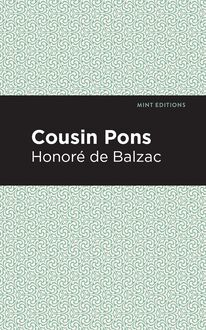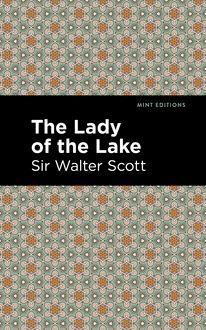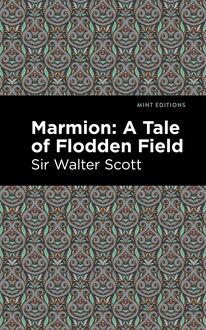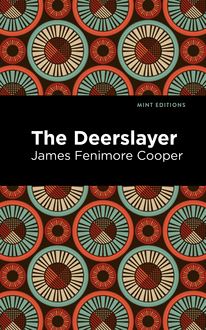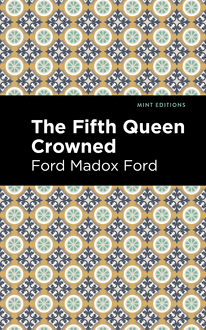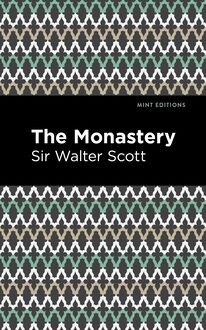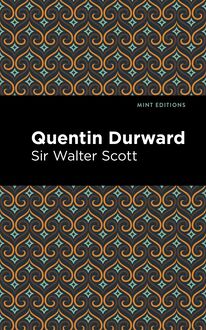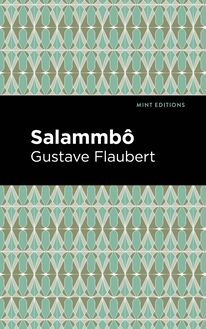-
 Univers
Univers
-
 Ebooks
Ebooks
-
 Livres audio
Livres audio
-
 Presse
Presse
-
 Podcasts
Podcasts
-
 BD
BD
-
 Documents
Documents
-
- Cours
- Révisions
- Ressources pédagogiques
- Sciences de l’éducation
- Manuels scolaires
- Langues
- Travaux de classe
- Annales de BEP
- Etudes supérieures
- Maternelle et primaire
- Fiches de lecture
- Orientation scolaire
- Méthodologie
- Corrigés de devoir
- Annales d’examens et concours
- Annales du bac
- Annales du brevet
- Rapports de stage
La lecture à portée de main
Vous pourrez modifier la taille du texte de cet ouvrage
Découvre YouScribe en t'inscrivant gratuitement
Je m'inscrisDécouvre YouScribe en t'inscrivant gratuitement
Je m'inscrisEn savoir plus
Vous pourrez modifier la taille du texte de cet ouvrage
En savoir plus

Description
Set in the 16th century when Elizabeth I ruled England, and her cousin, Mary, ruled Scotland, The Monastery depicts the religious tension and restlessness that existed along Scotland’s border. While Elizabeth ruled with her Anglican beliefs, Mary was a Catholic, and with much of their culture intermixing, this sowed unrest. While this feud between the Catholic church and the Anglican heretical church rages on, two families, the Glendenning's and the Avanel’s, mourn the loss of their patriarch. The Avanel widow and her daughter, Mary, move to the Tower of Glendeareg, a property of the Kennaquhair monastery. After the death of the Avanel widow, a mysterious black book containing heretic hymns and writings is found with her possessions. Scandalized and angered by the difference in religious views, the monks confiscate the book. Yet, despite their adamance, the book mysteriously finds its way back to the Tower of Glendeareg. As a state of lawlessness and religious intolerance prevailed over the region, Sir Walter Scott depicts two families as they experience grief, rivalry, love, and supernatural encounters. With a mix of romance, conflicted theology, humor, and supernatural events, The Monastery by Sir Walter Scott is unique and fascinating. First published two hundred years ago in 1820, The Monastery is one of the many additions to Sir Walter Scott’s Waverly series, and though is among the lessen known of Scott’s novels, is praised for its evocative setting and relatable characters. Centered around a fictious representation of the famed Melrose Abbey, a convent destroyed by English troops in 1385, The Monastery provides a detailed and intimate representation of the turmoil the differences in religion caused, especially along the ill-policed border of Scotland. This edition of The Monastery by Sir Walter Scott now features an eye-catching new cover design and is printed in a font that is both modern and readable. With these accommodations, this edition of The Monastery crafts an accessible and pleasant reading experience for modern audiences while restoring the original mastery and drama of Sir Walter Scott’s literature.
Sujets
Informations
| Publié par | Mint Editions |
| Date de parution | 14 mai 2021 |
| Nombre de lectures | 0 |
| EAN13 | 9781513285399 |
| Langue | English |
| Poids de l'ouvrage | 1 Mo |
Informations légales : prix de location à la page 0,0500€. Cette information est donnée uniquement à titre indicatif conformément à la législation en vigueur.
Extrait
The Monastery
Sir Walter Scott
The Monastery was first published in 1820.
This edition published by Mint Editions 2021.
ISBN 9781513280370 | E-ISBN 9781513285399
Published by Mint Editions®
minteditionbooks .com
Publishing Director: Jennifer Newens
Design & Production: Rachel Lopez Metzger
Project Manager: Micaela Clark
Typesetting: Westchester Publishing Services
C ONTENTS I II III IV V VI VII VIII IX X XI XII XIII XIV XV XVI XVII XVIII XIX XX XXI XXII XXIII XXIV XXV XXVI XXVII XXVIII XXIX XXX XXXI XXXII XXXIII XXXIV XXXV XXXVI XXXVII
I
O ay! the Monks, the Monks they did the mischief!
Theirs all the grossness, all the superstition
Of a most gross and superstitious age—
May He be praised that sent the healthful tempest
And scatter’d all these pestilential vapours!
But that we owed them all to yonder Harlot
Throned on the seven hills with her cup of gold,
I will as soon believe, with kind Sir Roger,
That old Moll White took wing with cat and broomstick,
And raised the last night’s thunder.
—O LD P LAY
The village described in the Benedictine’s manuscript by the name of Kennaquhair, bears the same Celtic termination which occurs in Traquhair, Caquhair, and other compounds. The learned Chalmers derives this word Quhair, from the winding course of a stream; a definition which coincides, in a remarkable degree, with the serpentine turns of the river Tweed near the village of which we speak. It has been long famous for the splendid Monastery of Saint Mary, founded by David the First of Scotland, in whose reign were formed, in the same county, the no less splendid establishments of Melrose, Jedburgh, and Kelso. The donations of land with which the King endowed these wealthy fraternities procured him from the Monkish historians the epithet of Saint, and from one of his impoverished descendants the splenetic censure, “that he had been a sore saint for the Crown.”
It seems probable, notwithstanding, that David, who was a wise as well as a pious monarch, was not moved solely by religious motives to those great acts of munificence to the church, but annexed political views to his pious generosity. His possessions in Northumberland and Cumberland became precarious after the loss of the Battle of the Standard; and since the comparatively fertile valley of Teviot-dale was likely to become the frontier of his kingdom, it is probable he wished to secure at least a part of these valuable possessions by placing them in the hands of the monks, whose property was for a long time respected, even amidst the rage of a frontier war. In this manner alone had the King some chance of ensuring protection and security to the cultivators of the soil; and, in fact, for several ages the possessions of these Abbeys were each a sort of Goshen, enjoying the calm light of peace and immunity, while the rest of the country, occupied by wild clans and marauding barons, was one dark scene of confusion, blood, and unremitted outrage.
But these immunities did not continue down to the union of the crowns. Long before that period the wars betwixt England and Scotland had lost their original character of international hostilities, and had become on the part of the English, a struggle for subjugation, on that of the Scots a desperate and infuriated defence of their liberties. This introduced on both sides a degree of fury and animosity unknown to the earlier period of their history; and as religious scruples soon gave way to national hatred spurred by a love of plunder, the patrimony of the Church was no longer sacred from incursions on either side. Still, however, the tenants and vassals of the great Abbeys had many advantages over those of the lay barons, who were harassed by constant military duty, until they became desperate, and lost all relish for the arts of peace. The vassals of the church, on the other hand, were only liable to be called to arms on general occasions, and at other times were permitted in comparative quiet to possess their farms and feus. 1 They of course exhibited superior skill in every thing that related to the cultivation of the soil, and were therefore both wealthier and better informed than the military retainers of the restless chiefs and nobles in their neighbourhood.
The residence of these church vassals was usually in a small village or hamlet, where, for the sake of mutual aid and protection, some thirty or forty families dwelt together. This was called the Town, and the land belonging to the various families by whom the Town was inhabited, was called the Township. They usually possessed the land in common, though in various proportions, according to their several grants. The part of the Township properly arable, and kept as such continually under the plough, was called in-field . Here the use of quantities of manure supplied in some degree the exhaustion of the soil, and the feuars raised tolerable oats and bear, 2 usually sowed on alternate ridges, on which the labour of the whole community was bestowed without distinction, the produce being divided after harvest, agreeably to their respective interests.
There was, besides, out-field land, from which it was thought possible to extract a crop now and then, after which it was abandoned to the “skiey influences,” until the exhausted powers of vegetation were restored. These out-field spots were selected by any feuar at his own choice, amongst the sheep-walks and hills which were always annexed to the Township, to serve as pasturage to the community. The trouble of cultivating these patches of out-field, and the precarious chance that the crop would pay the labour, were considered as giving a right to any feuar, who chose to undertake the adventure, to the produce which might result from it.
There remained the pasturage of extensive moors, where the valleys often afforded good grass, and upon which the whole cattle belonging to the community fed indiscriminately during the summer, under the charge of the Town-herd, who regularly drove them out to pasture in the morning, and brought them back at night, without which precaution they would have fallen a speedy prey to some of the Snatchers in the neighbourhood. These are things to make modern agriculturists hold up their hands and stare; but the same mode of cultivation is not yet entirely in desuetude in some distant parts of North Britain, and may be witnessed in full force and exercise in the Zetland Archipelago.
The habitations of the church-feuars were not less primitive than their agriculture. In each village or town were several small towers, having battlements projecting over the side walls, and usually an advanced angle or two with shot-holes for flanking the door-way, which was always defended by a strong door of oak, studded with nails, and often by an exterior grated door of iron. These small peel-houses were ordinarily inhabited by the principal feuars and their families; but, upon the alarm of approaching danger, the whole inhabitants thronged from their own miserable cottages, which were situated around, to garrison these points of defence. It was then no easy matter for a hostile party to penetrate into the village, for the men were habituated to the use of bows and fire-arms, and the towers being generally so placed, that the discharge from one crossed that of another, it was impossible to assault any of them individually.
The interior of these houses was usually sufficiently wretched, for it would have been folly to have furnished them in a manner which could excite the avarice of their lawless neighbours. Yet the families themselves exhibited in their appearance a degree of comfort, information, and independence, which could hardly have been expected. Their in-field supplied them with bread and home-brewed ale, their herds and flocks with beef and mutton (the extravagance of killing lambs or calves was never thought of). Each family killed a mart, or fat bullock, in November, which was salted up for winter use, to which the good wife could, upon great occasions, add a dish of pigeons or a fat capon,—the ill-cultivated garden afforded “lang-cale,”—and the river gave salmon to serve as a relish during the season of Lent.
Of fuel they had plenty, for the bogs afforded turf; and the remains of the abused woods continued to give them logs for burning, as well as timber for the usual domestic purposes. In addition to these comforts, the good-man would now and then sally forth to the greenwood, and mark down a buck of season with his gun or his cross-bow; and the Father Confessor seldom refused him absolution for the trespass, if duly invited to take his share of the smoking haunch. Some, still bolder, made, either with their own domestics, or by associating themselves with the moss-troopers, in the language of shepherds, “a start and overloup;” and the golden ornaments and silken head-gear—worn by the females of one or two families of note, were invidiously traced by their neighbours to such successful excursions. This, however, was a more inexplicable crime in the eyes of the Abbot and Community of Saint Mary’s, than the borrowing one of the “gude king’s deer;” and they failed not to discountenance and punish, by every means in their power, offences which were sure to lead to severe retaliation upon the property of the church, and which tended to alter the character of their peaceful vassalage.
As for the information possessed by those dependents of the Abbacies, they might have been truly said to be better fed than taught, even though their fare had been worse than it was. Still, however, they enjoyed opportunities of knowledge from which others were excluded. The monks were in general well acquainted with their vassals and tenants, and familiar in the families of the better class among them, where they were sure to be received with the respect due to their twofold character of spiritual father and secular landlord. Thus it often happened, when a bo
-
 Univers
Univers
-
 Ebooks
Ebooks
-
 Livres audio
Livres audio
-
 Presse
Presse
-
 Podcasts
Podcasts
-
 BD
BD
-
 Documents
Documents
-
Jeunesse
-
Littérature
-
Ressources professionnelles
-
Santé et bien-être
-
Savoirs
-
Education
-
Loisirs et hobbies
-
Art, musique et cinéma
-
Actualité et débat de société
-
Jeunesse
-
Littérature
-
Ressources professionnelles
-
Santé et bien-être
-
Savoirs
-
Education
-
Loisirs et hobbies
-
Art, musique et cinéma
-
Actualité et débat de société
-
Actualités
-
Lifestyle
-
Presse jeunesse
-
Presse professionnelle
-
Pratique
-
Presse sportive
-
Presse internationale
-
Culture & Médias
-
Action et Aventures
-
Science-fiction et Fantasy
-
Société
-
Jeunesse
-
Littérature
-
Ressources professionnelles
-
Santé et bien-être
-
Savoirs
-
Education
-
Loisirs et hobbies
-
Art, musique et cinéma
-
Actualité et débat de société
- Cours
- Révisions
- Ressources pédagogiques
- Sciences de l’éducation
- Manuels scolaires
- Langues
- Travaux de classe
- Annales de BEP
- Etudes supérieures
- Maternelle et primaire
- Fiches de lecture
- Orientation scolaire
- Méthodologie
- Corrigés de devoir
- Annales d’examens et concours
- Annales du bac
- Annales du brevet
- Rapports de stage
